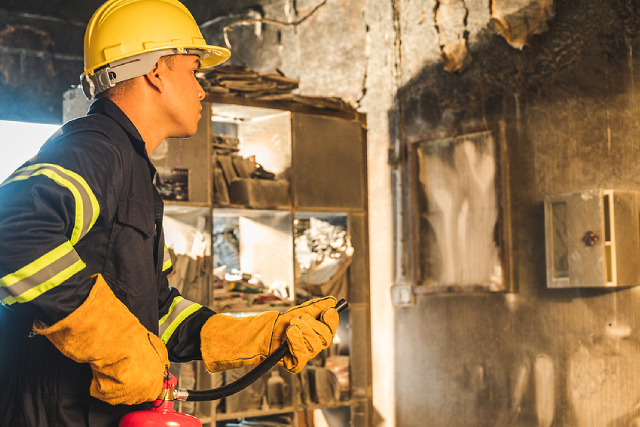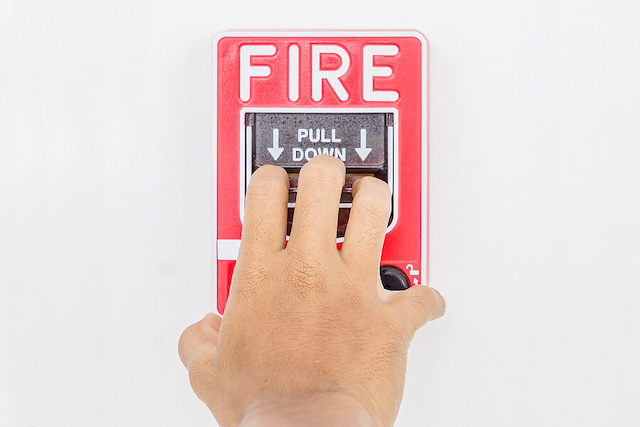The aftermath of a fire typically involves assessing the damage done and cleaning up before returning to business as usual. However, if fire extinguishers were used to suppress the fire, it is all the more important to do a proper and timely clean up because of the residue left behind. Recommended cleaning methods will vary depending on the type of fire extinguishers used, which we will cover in the following sections.
Clean Agent Residue
Clean agent fire extinguishers are effective against Class A, B, or C fires but also non-ozone depleting and non-conductive, making them ideal for suppressing fires involving computers and other electronics that may get damaged by corrosive dry chemicals or water. Clean agent fire extinguishers leave no residue since the clean firefighting agents dissipate harmlessly into the air, so virtually no clean up is necessary.
Dry Chemical Residue
Fire extinguishers using dry chemical firefighting agents such as sodium bicarbonate, potassium bicarbonate, phosphate, and monoammonium generally leave behind residue that forms a corrosive powder that must be cleaned up quickly, especially if they have come into contact with metal surfaces. Steps for a proper clean-up include:
1. Sweep and vacuum loose debris.
2. Spray a solution of isopropyl alcohol half diluted in warm water on affected surfaces. Allow for a few minutes before wiping it with a damp cloth.
3. Apply a solution of 2% vinegar and 98% hot water to areas with potassium bicarbonate and sodium bicarbonate residue, and wipe them down with a damp cloth after a few minutes.
4. Conduct a final wash on the affected areas with soap and water and rinse clean
Class K Wet Chemical Residue
Class K wet chemical extinguishers are best used in kitchen environments due to their superior extinguishing capabilities on cooking oils and the non-corrosive nature of wet chemicals, unlike any of their dry counterparts. When grease or cooking oil catches fire, a low-pH, potassium acetate-based Class K fire extinguisher extinguishes the flames and cools the cooking surfaces by discharging a mist of suppression agent. Cleaning up the residue from such extinguishers is necessary before affected equipment like pots and pans can be used for cooking again.
1. Wear rubber gloves and prep the area by shutting off power to all cooking appliances and other electronic devices.
2. Use a rag or sponge doused in hot, soapy water to wipe off the foamy residue.
3. Rinse all surfaces where wet chemicals have come into contact and let dry completely before turning the power on.
Conclusion
Depending on the type used, fire extinguishers can leave a potentially harmful residue if not cleaned up immediately after a fire incident. Since these firefighting tools use different extinguishing agents that work best against certain fires, it is vital to know the proper clean-up methods to effectively remove them from affected areas.
To keep your knowledge and skills as a fire safety manager up to date, consider enrolling in an FSM course in Singapore today! TenLearn is an online learning platform hosting comprehensive fire safety courses in Singapore. Get the knowledge you need to stay competitive while earning FSM CPD points for each course completed.
Maintain your FSM certification by contacting us today!


Write a public review